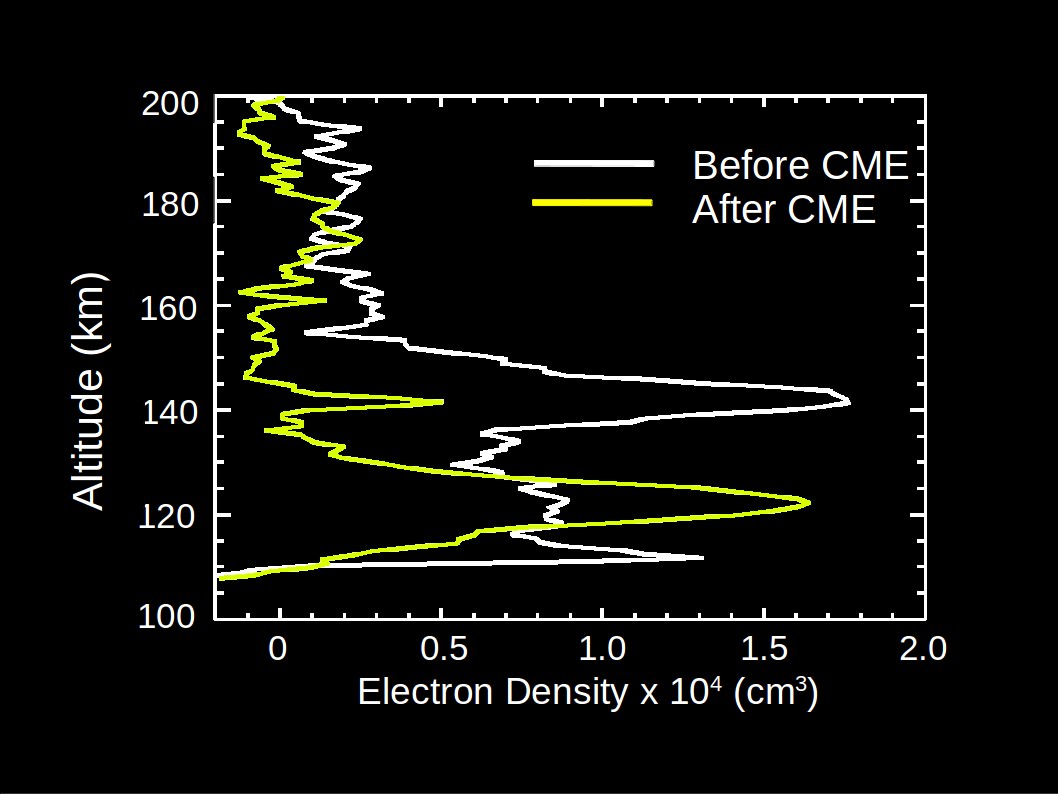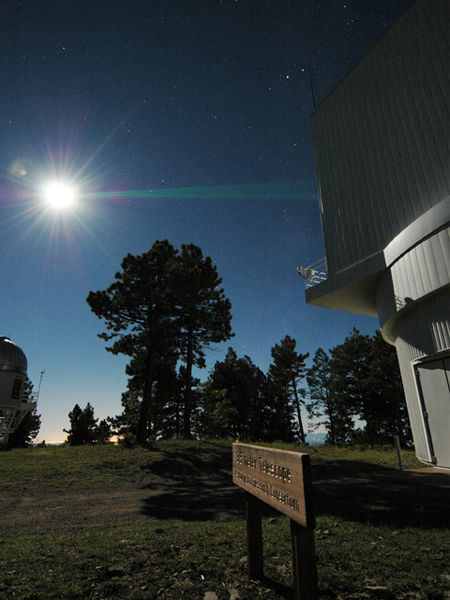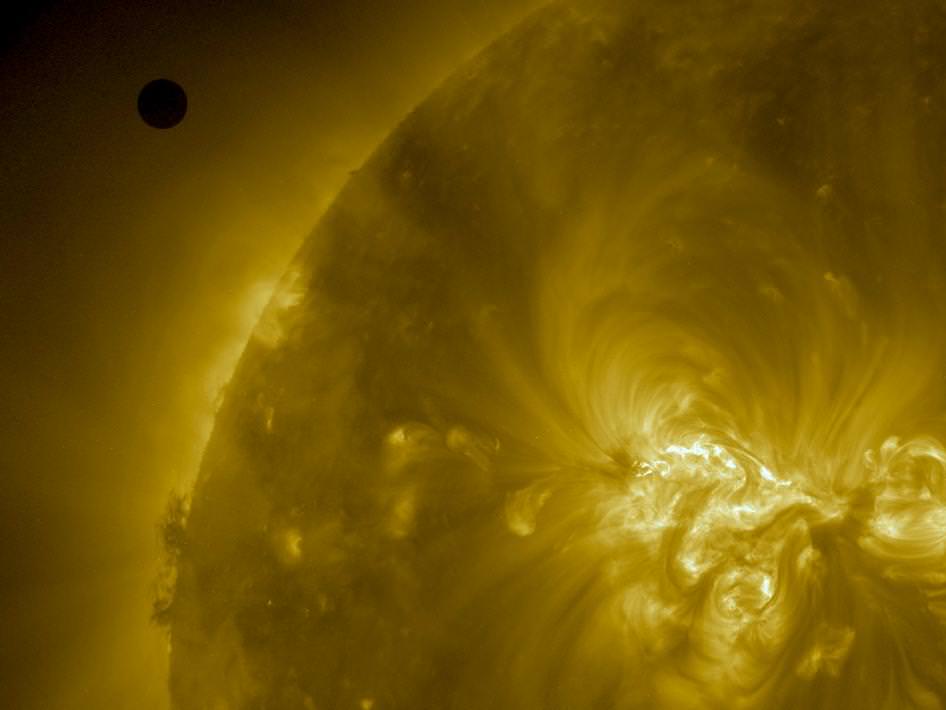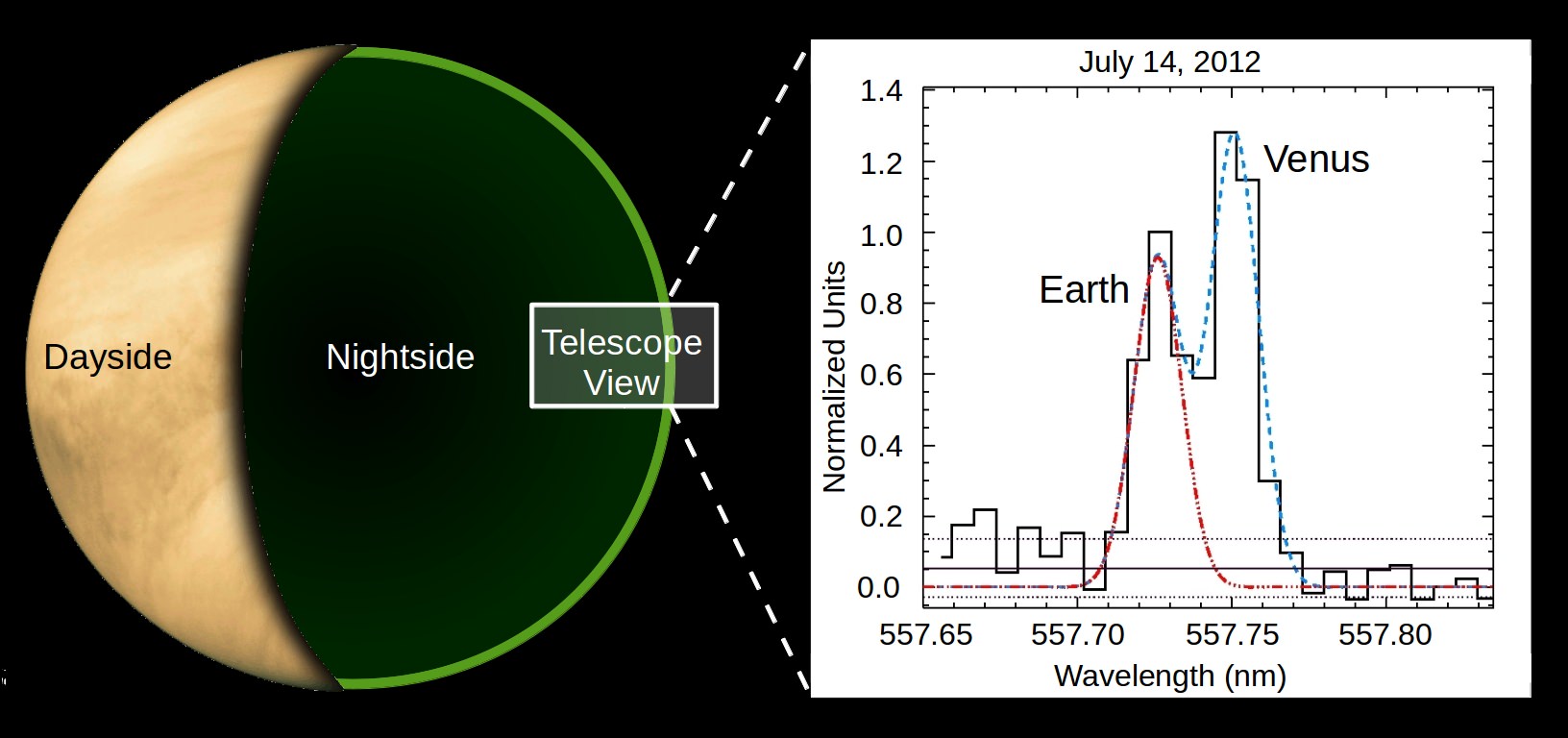It’s a major mystery posed by our sister world.
Does the atmosphere of Venus possess upper atmospheric phenomena similar to the Earth, such as aurora or nightglow?
Now, a recent announcement out of the American Astronomical Society’s 46th annual meeting of the Division of Planetary Science being held this week in Tucson, Arizona has shed new light on the dilemma.
The discovery was announced on Wednesday, November 12th at the 46th AAS meeting and was made as a collaborative effort by researchers from New Mexico State University at Las Cruces, the Stanford Research Institute (SRI) International, the University of Colorado at Boulder, the University of Koln and University of Munich, Germany, the European Space and Technology Center in the Netherlands and the Institut de Recherche en Astrophysique et Planétologie, in France.
For the study, researchers observed Venus from December 2010 to July 2012 using the Astrophysical Research Consortium (ARC)Echelle Spectrograph and the ARC 3.5 metre telescope located at Apache Point near Sunspot, New Mexico.
Timing was crucial, as the Sun was coming off of a profound deep minimum through 2009 and just beginning to become active with the start of solar cycle #24. Observers were looking for activity along the 5577.3 angstrom wavelength known as the “oxygen green line.” Activity had not been seen at this wavelength on the nighttime side of Venus since 2004.

“These are intriguing results, suggesting that it is possible to have aurora on non-magnetic planets,” said Candace Gray, Astronomer and NASA Earth and Space Science Fellow at Las Cruces and lead researcher in the study. “On Venus, this green line has been seen only intermittently.”
Earth is the oddball among the terrestrial planets in the inner solar system with its robust magnetic field. On Earth, aurorae occur when said field captures charged particles ejected from the Sun and funnels them in towards the poles. Events seen in the study tended to drop 140 to 120 kilometres in altitude in the Venusian atmosphere, highly suggestive of auroral activity seen in the ionosphere of Earth.
Researchers were fortunate during one of the recent runs at Apache Point that the Sun kicked off a coronal mass ejection that headed Venus’s way. During the July 2012 solar storm, the team detected one of the brightest green line emissions that had ever been detected by observers on Earth.

This demonstrates that perhaps, a magnetic field is optional when it comes to auroral activity, at least in the case of the planet Venus. Located only 0.7 astronomical units (108.5 million kilometres) from the Sun, our tempestuous star actually wraps the planet with its very own magnetotail.
Researchers are also looking to compare their results with observations from the European Space Agency’s Venus Express orbiter which arrived at the planet on April 2006.
“Currently, we are using observations from VIRTIS on Venus Express to try and detect the green line,” Gray told Universe Today. “We had coordinated ground based observations with them this past February, and we detected the green line from the ground when they were observing the night side limb. Additionally, we are using the Electron Spectrometer and ASPERA-4 to observe how the electron energy and density changes in the atmosphere after coronal mass ejection impacts.”
This also raises the interesting possibility that NASA’s MAVEN spacecraft — which recently arrived in orbit around Mars — might just detect similar activity in the tenuous Martian atmosphere as well. Like Venus, the Red Planet also lacks a global magnetic field.
Could this glow be connected with spurious sightings of the “Ashen Light of Venus” that have cropped up over the centuries?
Of course, ashen light, also known as Earthshine on the dark limb of the Moon, is easily explained as sunlight reflected back from the Earth. Moonless Venus, however, should be ashen light free.
“The green line emission that we see is brightest on the limb (edge) of the planet,” Gray told Universe Today. “We’re sure that there is emission all along the nightside, but because of the optical depth, it appears much brighter on the limb of the planet. I think it would be too faint to detect with the naked eye.”
Nightglow has been a leading suspect for ashen light on the Venusian nightside, and a similar green line emission detection rivaling the 2012 event was made by Tom Slanger using the Keck I telescope 1999.
Other proposed suspects over the centuries for ashen light on Venus include lightning, volcanism, light pollution (!) from Venusian cities, or just plain old observer error.
Certainly, future observations are needed to cinch the solar activity connection.
“We will likely observe Venus again from Apache Point the next time Venus is visible to us in June 2015,” Gray told Universe Today. “We will continue looking at Venus Express observations until the craft dies in the atmosphere.”

Venus can currently be seen crossing through the field of view of SOHO’s LASCO C3 camera. After spending most of 2014 in the dawn sky, Venus will emerge from behind the Sun low in the dusk to head towards greatest elongation in the evening sky on June 6th, 2015. And from there, Venus will once again slender towards a crescent, presenting its nightside towards Earth, and just perhaps, continuing to present a lingering mystery of modern astronomy.

